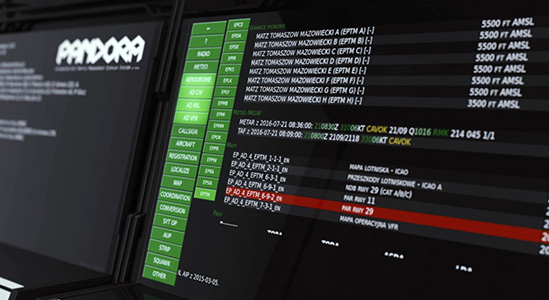The Polish Air Navigation Services Agency (PANSA) is among Europe’s largest institutions that employ civilian air traffic controllers. As an organisation with strategic targets oriented to safety, effectiveness and development, PANSA perfectly understands the current needs and requirements of air traffic controllers and other operations personnel. Challenges related to digitalisation as well as easy and quick access to various types of information, and consequently maintenance of high level of safety and reduction of delays, require new technological solutions. The need to meet these challenges and adapt to the changing environment have made PANSA design and implement its own proprietary Information Display System PANDORA, which it keeps developing.
